Although I lived in Norwich a few years ago, I visited the Museum of Norwich at the Bridewell for the first time as a tourist with my son. It was a fantastic way to rediscover the city. The museum is very child-friendly, with insightful exhibits on Norwich’s commercial and industrial history. Did you know Norwich was once England’s second-largest city after London? If you’re in the area, the Museum of Norwich at the Bridewell is definitely worth a visit. Read on to discover its highlights!
Table of Contents
Top Things to Discover at the Museum of Norwich at the Bridewell
The Museum of Norwich was originally a Bridewell, a house of correction and prison. If you’re interested in such places, an inventory from 1813 lists items at the Bridewell, including ‘posts and chains’ related to its historical use.
PLAN YOUR TRIP TO ENGLAND
Stay connected in England with a giffgaff free SIM or an Airalo eSim for seamless data coverage throughout the UK. Additionally, rent a car in the United Kingdom to explore all the attractions of the British countryside, including the fantastic museums on my blog!
The building houses the largest vaulted undercroft in the city. These rooms were part of the original medieval structure used for storage. Unfortunately, the undercroft is not open to the public. Still, you will soon be able to visit the keep in the nearby Norwich Castle, which is currently partially closed for redevelopment.
Despite its origins, the Museum of Norwich at the Bridewell is anything but gloomy. In the museum, you can learn a great deal about Norwich’s history. It features many fun interactive displays for children. We had a wonderful time exploring Norwich’s vibrant past, from looms to various trades. There’s even a reconstruction of an old pharmacy!
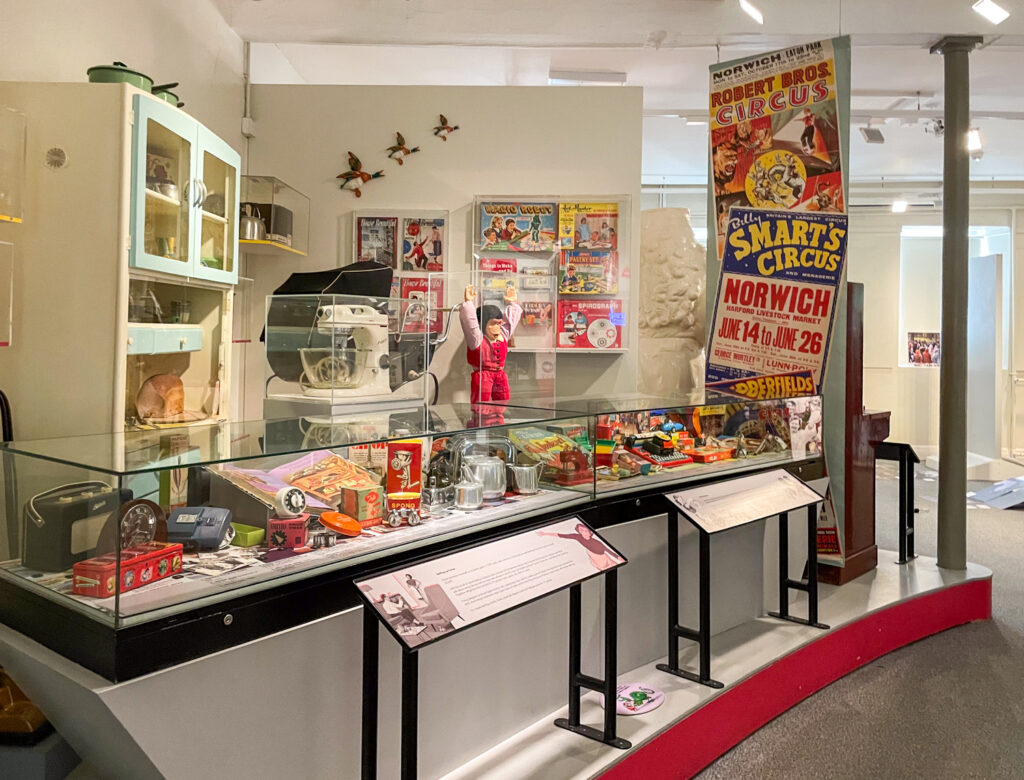
England’s Second Largest City: Norwich History in a Nutshell
The museum begins its exhibits in the 1700s. Norwich was England’s second city, larger and more prosperous than its medieval counterparts, such as Bristol, York, Newcastle, and Exeter.
You can view historical artefacts, including a medieval door frame, a parliamentary chair, and a sedan chair. You can also try fashionable wigs in the recreated 18th-century coffee house! It’s a fun experience, especially for children.
Furthermore, the museum exhibits pattern books and a skirt made from cloth produced in Norwich. Before visiting the Museum of Norwich at the Bridewell, I had no idea that the textile industry had played such an important role in the city’s history!
There is also an interactive chest of drawers filled with objects to see, touch, smell, and ponder. The museum is really child-friendly, with kids’ areas in every room, and my son loved to learn hands-on about the city’s many changes over the years.
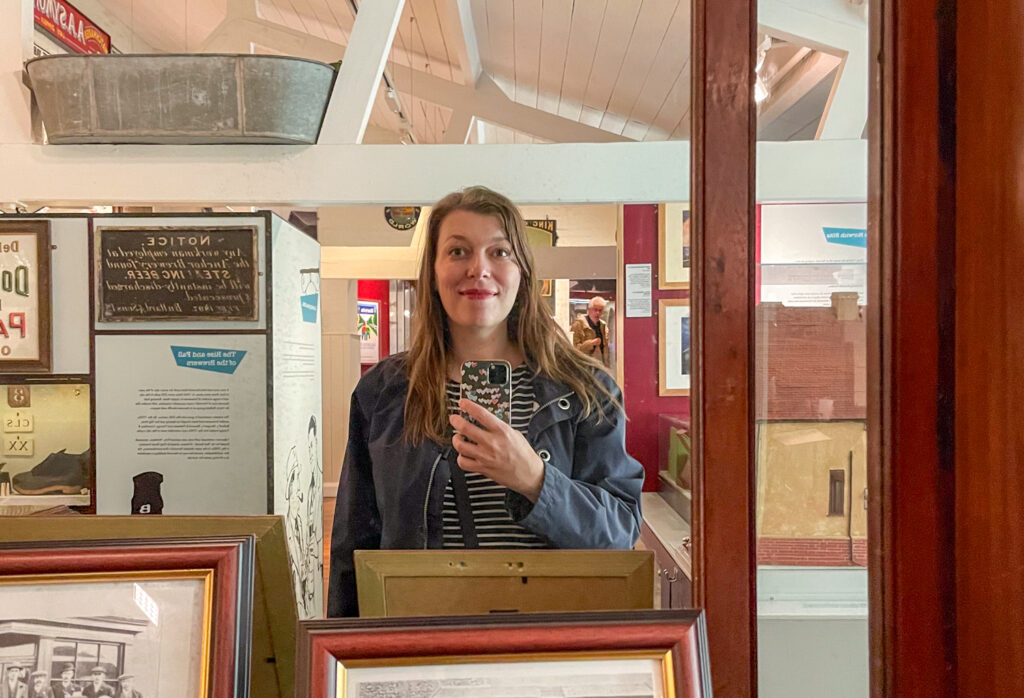
Norwich Industrial Heritage: Local Products from Textiles to Aeroplanes
Norwich has a rich industrial heritage, and numerous industries have shaped the city. They include textiles, shoes, the production of mustard, chocolate, crackers, heavy engineering, and aircraft manufacturing.
In the Museum of Norwich at the Bridewell, you can see many examples of local products. One super famous Norwich brand is Colmans. You can find their amazing sauces in every supermarket.
Among the notable exhibits is a model of a FE2B plane made by Boulton and Paul, the world’s first wire netting machine, and a restored Jacquard loom, the last remaining example of the thousands of looms once operated daily in Norwich.
If you like fashion, you’ll be amazed to discover that Norwich has been home to some of the UK’s largest shoe manufacturers. At its peak, 26 shoe factories were employing around 12,000 people. The museum showcases the most colourful, extravagant, and elegant footwear made in Norwich, illustrating the evolution of footwear fashion over the years.
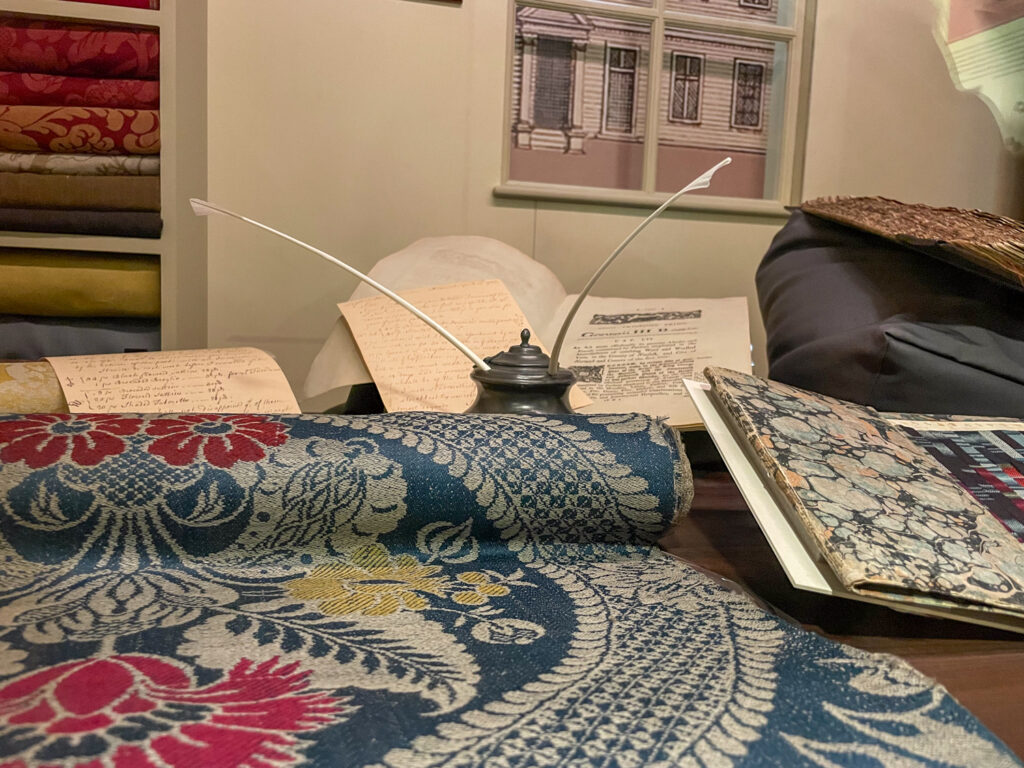
The Pharmacy
The Pharmacy at the Museum of Norwich is an impressive recreation of an early 20th-century chemist’s shop, complete with a variety of potions, packets, and pills.
The counters, drawers, and shelves are filled with a remarkable assortment of mysterious potions, chemicals, and pills, all displayed in their original packets and containers.
You can easily spend hours exploring this fascinating collection of health and household goods. All the bottles and their contents are real, but you cannot touch them. However, an interactive display allows you to discover what is hidden inside the drawers, which is even better.
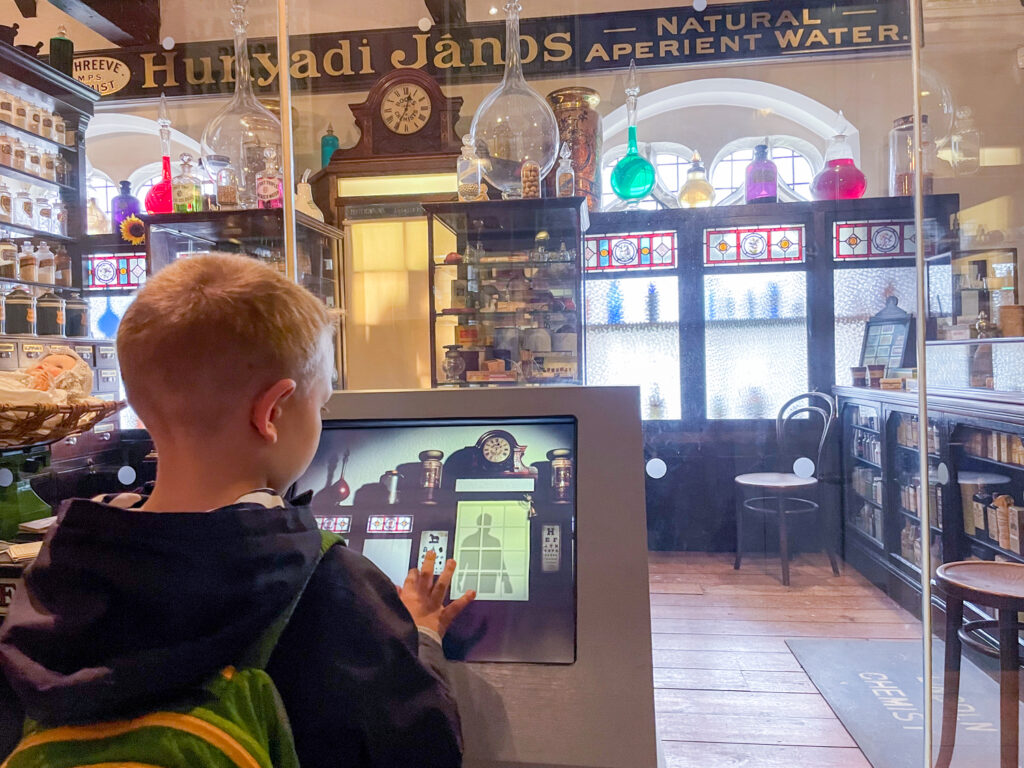
Modern Norwich: From 1900 Onwards
In the section of the Museum of Norwich at the Bridewell dedicated to modern history, we explored Victorian Norwich and the significant changes brought by the arrival of trains and public utilities, such as water supply and sewerage. (If you’re interested in British sewage, don’t miss the Museum of Water & Steam in London). This period marked the rise of industries in the city.
The early 20th century was a time of significant change. Norwich citizens endured the challenges of two world wars and the hardships caused by the Great Depression. During WWII, Norwich became the first city in the UK to be bombed in 1940. Later, the American army arrived, with USAF airbases housing over 50,000 personnel!
The museum showcases how wartime damage reshaped the city’s map and gives insight into life in post-war Norwich. The displays cover themes such as the growth of council estates, life as a child in the city, and how locals spent their free time.
You can even enjoy a recreated 1950s living room. This part of the exhibit was quite funny for me and especially interesting for my 5-year-old son. He began asking if, when I was young, I had a television or even a phone, after learning that in the past, TV didn’t have a remote and there were no such things as smartphones. I can assure you I am not THAT old, but I still remember black and white TV and phone booths!
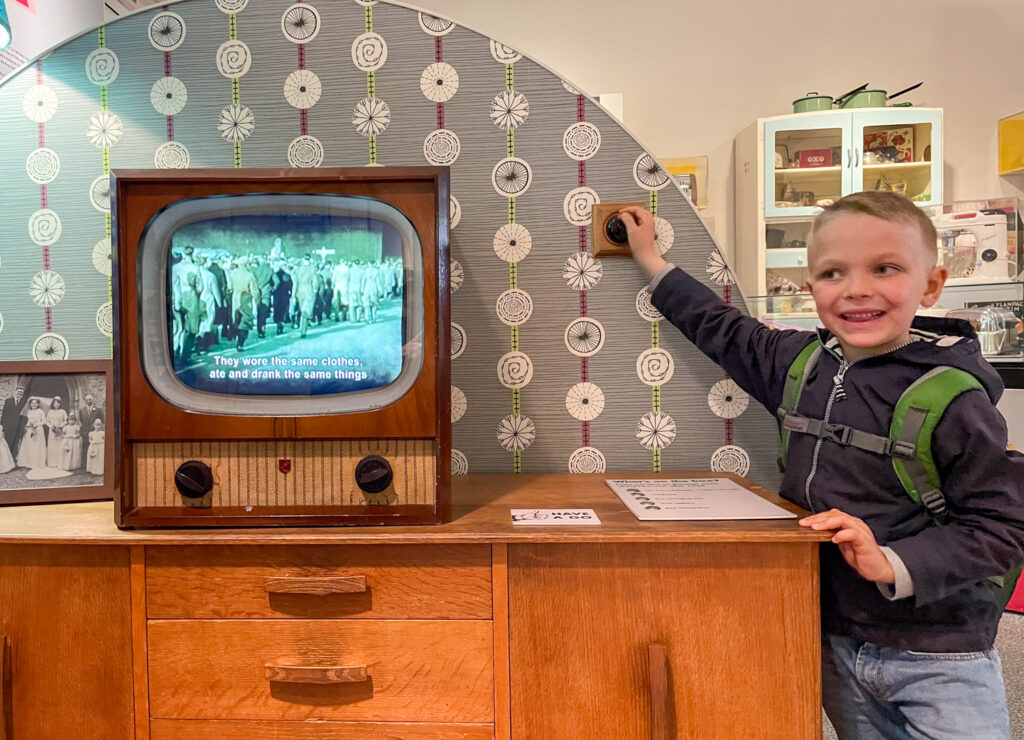
Plan your visit to the Museum of Norwich
When visiting Norwich, you must visit the Museum of Norwich at the Bridewell. It’s really a family-friendly museum and offers an interactive experience to learn about the city’s rich history. At the same time, temporary exhibitions offer something new on each visit.
Opening times
The Museum of Norwich at the Bridewell is open Tuesday to Saturday from 10:00 am to 4:30 pm. It’s always closed on Sunday. During Christmas holidays, the museum’s hours may vary, so I recommend checking the website beforehand if you want to visit it during this period.
Admission tickets
Admission prices are £7.80 for adults and £6.60 for children aged 4 to 18. Children under four can enter for free. There are also family discounts available, and if you have a Norfolk Museums Pass, you can enter for free.
How to get to the Museum of Norwich
The Museum of Norwich at the Bridewell is in the centre of Norwich, just a five-minute walk from Norwich market, Norwich Castle, and Norwich Cathedral. I recommend walking there, as there is no parking nearby. The nearest parking facility is St Andrew’s Car Park on Duke Street.
Alternatively, you can use the Norwich Park & Ride service, which offers ample parking outside the city and connects to the city centre with local buses. The Park & Ride buses stop at Castle Meadow, a five-minute walk from the museum.
If you’re arriving by train, the railway station is just a ten-minute walk away. To plan your journey to Norwich and to the Museum of Norwich at the Bridewell, I recommend using Google Maps so you can check all the options available.
Museum of Norwich at the Bridewell
Bridewell Alley, Norwich NR2 1AQ
Where to Stay in Norwich
Norwich is one of my favourite cities in Europe. I lived there for a time and return frequently, whether on my own or with my son, to visit museums and catch up with friends. Therefore, I can recommend fantastic hotels that I have personally experienced.
For a truly British experience you can stay at The Maids Head Hotel, an elegant hotel with restaurant and free parking opposite the Cathedral, just a stone’s throw from Elm Hill, two of Norwich’s most popular attractions. If you arrive by train and prefer a flat, the Wellington Apartments have studios with a kitchen, reception open 24/7, garden and free WiFi in the centre of Norwich, close to the train station.
Final Thoughts on the Museum of Norwich at the Bridewell
In conclusion, the Museum of Norwich at the Bridewell offers an interactive and remarkable journey through the city’s history. We enjoyed the exhibits for all ages as it’s an ideal destination for families looking to learn and explore together.
Feel free to leave a comment about your favourite exhibit or if this article inspired you to visit the Museum of Norwich at the Bridewell next time you’re in Norwich.
